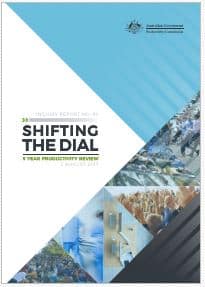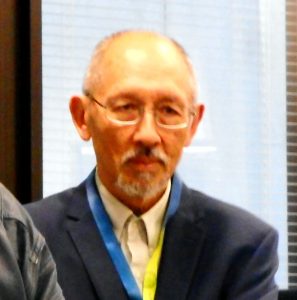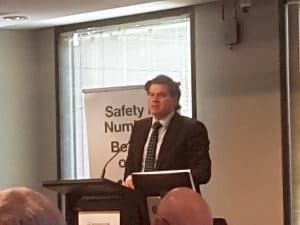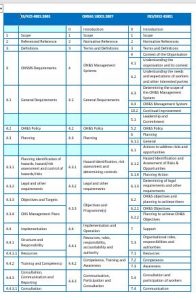 Over the last few months, SafetyAtWorkBlog has received several new OHS-related books for review. There’s not enough time to undertake a deep review of each book so here is the first of a series of quick reviews.
Over the last few months, SafetyAtWorkBlog has received several new OHS-related books for review. There’s not enough time to undertake a deep review of each book so here is the first of a series of quick reviews.
Category: productivity
Look to the source of workplace conflict, exploitation and injustice
 Occupational health and safety advocates are pushing for safety management and strategies to refocus on people by talking about “people-centric” approaches and recalibrating legislation to re-emphasise prevention. This push parallels society’s frustration with political strategies that favour big business, the under-investment in education and health care systems and companies that announce record profits at the same time as sacking staff. That frustration is becoming accepted by political parties that are starting to apply more people-centric policies or by countries and States that are appointing representatives from outside the mainstream political organisations.
Occupational health and safety advocates are pushing for safety management and strategies to refocus on people by talking about “people-centric” approaches and recalibrating legislation to re-emphasise prevention. This push parallels society’s frustration with political strategies that favour big business, the under-investment in education and health care systems and companies that announce record profits at the same time as sacking staff. That frustration is becoming accepted by political parties that are starting to apply more people-centric policies or by countries and States that are appointing representatives from outside the mainstream political organisations.
At a closing event for National Safe Work Month on 1 November 2017, WorkSafe Victoria’s CEO,
Important little OHS steps in latest Productivity Commission report
 Australia’s Productivity Commission (PC) released a 5 year productivity review called “Shifting the Dial“. It is one of those large government reports from which lots of people draw lots of conclusions. Chapter 3 in this report addresses Future Skills and Work within which occupational health and safety (OHS) is mentioned in a useful and important context.
Australia’s Productivity Commission (PC) released a 5 year productivity review called “Shifting the Dial“. It is one of those large government reports from which lots of people draw lots of conclusions. Chapter 3 in this report addresses Future Skills and Work within which occupational health and safety (OHS) is mentioned in a useful and important context.
The PC acknowledges the changing types of work that have been written about copiously elsewhere with varying degrees of alarmism. The Commission contextualises this rate of “transformative” change as the latest in a continuum of change and recommends this policy approach in relation workplace safety:
Hollnagel, Safety II and Captain Hindsight
 The ideal outcome of attending a safety conference or seminar is to hear something new, some innovation that inspires, or gain a hint for a potential opportunity. In occupational health and safety (OHS) this rarely happens. So the most common outcome is clarification or reinforcement. This was my experience at a Professor Erik Hollnagel seminar in Melbourne on October 3, 2017.
The ideal outcome of attending a safety conference or seminar is to hear something new, some innovation that inspires, or gain a hint for a potential opportunity. In occupational health and safety (OHS) this rarely happens. So the most common outcome is clarification or reinforcement. This was my experience at a Professor Erik Hollnagel seminar in Melbourne on October 3, 2017.
Hollnagel’s Safety II concept has been round for several years now and has had considerable influence on the thinking of OHS professionals, if no one else. Safety II has generated several commercial and academic offshoots that provide hope for a more realistic and practical application of safety principles.
Cancer survivors returning to work
 If occupational health and safety (OHS) is to include the “whole-of-life” for workers, companies, products and projects, OHS professionals need to expand their pool of knowledge to meet the demands for an inclusive organisational culture. One recent research paper supports this approach by looking at the return to work of cancer survivors.
If occupational health and safety (OHS) is to include the “whole-of-life” for workers, companies, products and projects, OHS professionals need to expand their pool of knowledge to meet the demands for an inclusive organisational culture. One recent research paper supports this approach by looking at the return to work of cancer survivors.
Big OHS data needs to digitise the past
 A safety conference in Victoria Australia today heard from Innes Willox of the AIGroup about new challenges in business and occupational health and safety (OHS). As many have mentioned recently big data is a challenge but with important benefits. A major flaw in any of these discussions is an overestimation of data sources and usefulness. Continue reading “Big OHS data needs to digitise the past”
A safety conference in Victoria Australia today heard from Innes Willox of the AIGroup about new challenges in business and occupational health and safety (OHS). As many have mentioned recently big data is a challenge but with important benefits. A major flaw in any of these discussions is an overestimation of data sources and usefulness. Continue reading “Big OHS data needs to digitise the past”
New OHS management elements in ISO45001
 Following yesterday’s article on the impending international occupational health and safety (OHS) management Standard, ISO45001, some readers have asked for more details. David Solomon, the Head of the Australian International Delegation of ISO45001 provided a table that compares the elements of ISO45001 with AS4801 and OHSAS18001.
Following yesterday’s article on the impending international occupational health and safety (OHS) management Standard, ISO45001, some readers have asked for more details. David Solomon, the Head of the Australian International Delegation of ISO45001 provided a table that compares the elements of ISO45001 with AS4801 and OHSAS18001.
According to Solomon there are several elements that are new to ISO45001, ie. not included overtly in AS4801:
